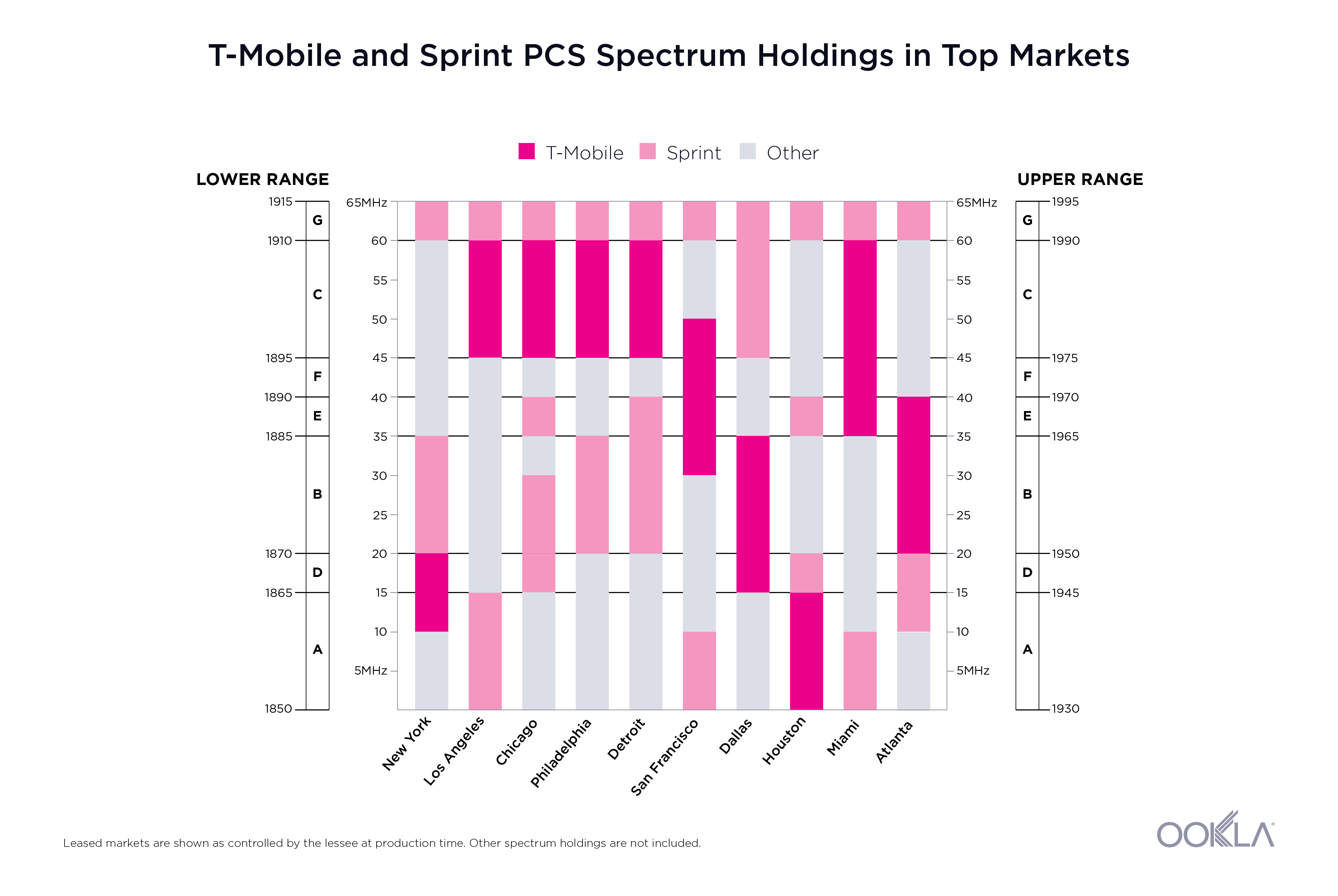When it comes to spectrum, T-Mobile US could hardly have found a better fit than Sprint, according to analysis from Ookla on the spectrum position of the New T-Mobile.
Milan Milanovic, Ookla’s technologist evangelist, said that particularly when it comes to PCS spectrum in major markets, there is “staggering” contiguity in Sprint and T-Mobile US’ holdings. Milanovic assessed the yet-to-be-officially combined company’s spectrum position and that of Dish Network in a new blog entry, according to what is known about the New T-Mobile’s plans for its network once it completes its proposed merger with Sprint and divestment of spectrum assets to Dish.
Ookla is the parent company of spectrum data and network intelligence specialist Mosaik, which it acquired last year, and has worked with T-Mobile US on network optimization based on its speed test data.
Milanovic notes the following major points in regards to New T-Mobile:
-T-Mo will keep all of Sprint’s 2.5 GH and PCS spectrum, and “build an LTE layer on a denser cell site grid using Sprint and T-Mobile PCS spectrum synergies in combination with T-Mobile’s 600 MHz, 700 MHz and AWS holdings. This will address the existing capacity demand and expedite the process of allocating most of the 2.5 GHz spectrum assets to 5G NR.
“In many major markets, that spectrum is contiguous to existing T-Mobile assets and will allow for wider allocations and higher spectral efficiency,” Milanovic went on, adding that, “Looking closely at the PCS spectrum in top markets, the contiguity between Sprint and T-Mobile is staggering.”
“In markets like Los Angeles, Chicago, Philadelphia and Detroit, adding the Sprint G Block will allow the new T-Mobile to expand the existing PCS spectrum assets and deploy 20 MHz channels. In Miami and Atlanta, the contiguous PCS block is a whopping 30 MHz wide,” he wrote. “In markets like Detroit and Dallas, T-Mobile will have two 20 MHz PCS channels. This will enable the new T-Mobile to offer significantly improved capacity while leveraging more spectrally efficient 20 MHz channels.
“All this additional capacity makes the PCS spectrum a strong candidate for the 5G network,” he added, although the company is initially expected to launch mobile 5G through a combination of 600 MHz and 2.5 GHz. New T-Mobile will hold about 160 megahertz of 2.5 GHz in the top 100 markets, on average, as possibly as much as 194 megahertz, he noted. T-Mobile US’ existing millimeter wave licenses will also be able to provide additional capacity in urban markets.

-In terms of network integration and migration of customers, Milanovic pointed out that T-Mobile plans to “bridge the two network cores together by routing the traffic to the T-Mobile anchor network,” similar to its strategy when it handled the migration of MetroPCS CDMA customers — and it has said that the number of customers that are expected to migrate in major metro areas is comparable to the Metro migration.
“Many customers will not require new devices,” Milanovic wrote. “A large number of Sprint’s postpaid subscribers carry devices that support T-Mobile LTE frequency bands, including the common PCS band, and will only require an over-the-air software update to enable new features and services like Voice over LTE (VoLTE). This approach will offer immediate improvements in coverage and speed to Sprint subscribers, while freeing up Sprint’s PCS spectrum assets currently used for CDMA voice services.”
On the network side, in order to select which Sprint sites to keep and which to decommission, Milanovic noted that T-Mobile US relied on Speedtest Intelligence data from Ookla to develop an engineering model to forecast congestion and required capacity on a sector-level basis. That model led to a 71% reduction in congestion, he said, and it is being used to analyze which T-Mobile US and Sprint sites to keep, based on network coverage, available spectrum and traffic data.
Read the full analysis here from Ookla.

